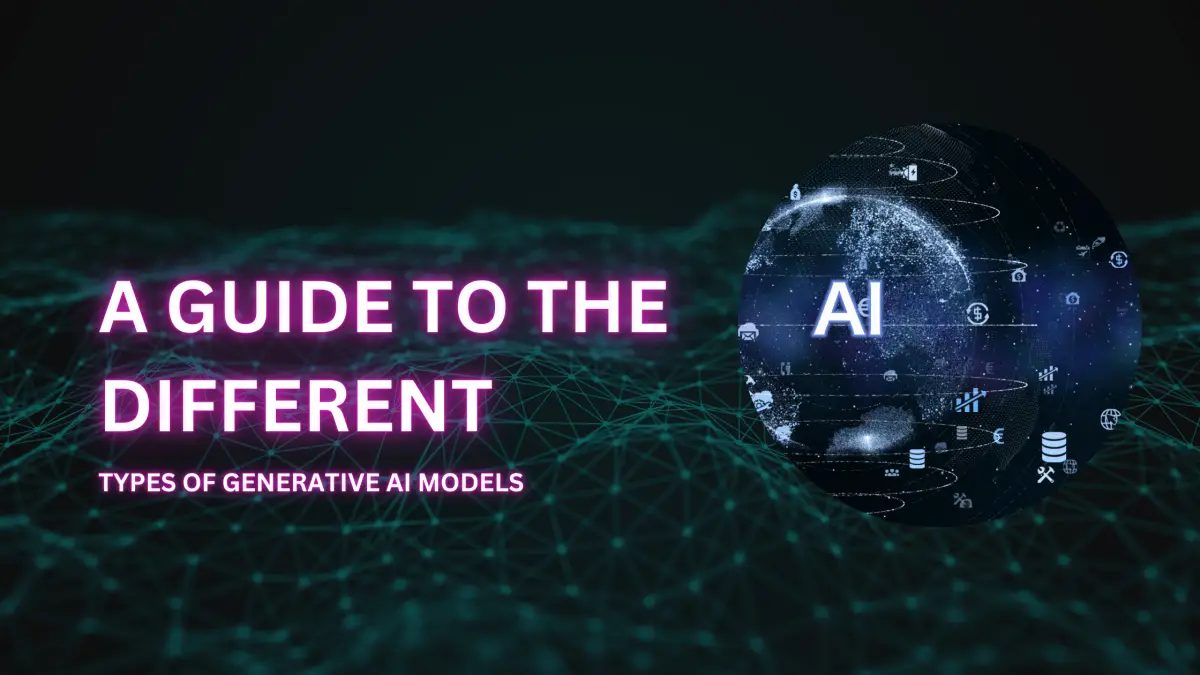Generative AI Models: Generative AI has become one of the most talked-about areas in technology, with its ability to create original content that feels like it came from a human mind. From producing realistic images to drafting complex reports, these models are finding their way into industries ranging from healthcare to finance.
Yet, “generative AI” is not a single technology. It’s an umbrella term that covers several different model types, each with unique strengths and use cases. For businesses, understanding these differences is crucial. Choosing the right model can make the difference between a solution that delivers value and one that falls short.
At Miniml, we’ve seen first-hand how tailoring the right model to the right problem can produce remarkable results. This guide breaks down the main types of generative AI models, their applications, and how to select the best fit for your needs.
What is Generative AI?
Generative AI refers to systems that can create new data text, images, music, code, and more based on the patterns they’ve learned from existing datasets.
Unlike traditional AI models, which often focus on classification or prediction, generative models are designed to produce outputs that did not exist before. This creative aspect is why they’re being adopted in so many sectors, from product design to customer service.
Why Knowing the Model Type Matters for Businesses
Selecting a generative AI model isn’t just a technical decision it’s a strategic one.
The choice impacts:
- Performance – Some models are better at handling text, others excel in visual generation.
- Cost – Training and running a large model can be expensive, so efficiency matters.
- Scalability – Certain models work well for small prototypes but struggle in production environments.
- Compliance – Highly regulated industries need models that can meet strict data and privacy requirements.
When advising clients, Miniml focuses on aligning the model type with the project’s objectives, available resources, and industry-specific demands.
The Main Types of Generative AI Models
1. Large Language Models (LLMs)
LLMs are trained on vast amounts of text to understand and generate human-like language.
Examples: GPT, Claude, LLaMA
Common Uses:
- Writing and summarizing reports
- Automating customer support responses
- Creating marketing content
- Generating code snippets
Advantages:
- Highly flexible with text-based tasks
- Can be fine-tuned for specific industries
Limitations:
- May produce incorrect or biased information if not trained carefully
- Require significant computing resources for large-scale use

2. Diffusion Models
Diffusion models create images by starting with random noise and refining it step by step until a clear image emerges.
Examples: Stable Diffusion, DALL·E
Common Uses:
- Generating high-quality visuals for design and advertising
- Producing product mockups
- Assisting creative professionals with concept art
Advantages:
- Capable of producing detailed, realistic images
- Can work from text prompts or partial images
Limitations:
- Computationally intensive
- May require extensive fine-tuning to meet brand or style requirements
3. Generative Adversarial Networks (GANs)
GANs consist of two neural networks a generator and a discriminator that compete to produce increasingly realistic outputs.
Examples: StyleGAN, BigGAN
Common Uses:
- Creating synthetic training data
- Generating lifelike faces and objects
- Developing realistic environments for simulations
Advantages:
- Exceptional at producing highly realistic outputs
- Useful when training data is limited
Limitations:
- Can be unstable during training
- Risk of producing misleading or unethical content if misused
4. Variational Autoencoders (VAEs)
VAEs compress input data into a simplified representation (encoding) and then reconstruct it (decoding).
Examples: Beta-VAE, Conditional VAE
Common Uses:
- Detecting anomalies in datasets
- Reconstructing medical images
- Generating variations of existing designs
Advantages:
- Good for feature learning and compression
- Works well with structured and semi-structured data
Limitations:
- Image quality may be lower than with GANs or diffusion models
- Not always ideal for generating highly complex data

5. Multimodal Generative Models
These models process and generate different types of data simultaneously, such as text and images, or text and audio.
Examples: CLIP, GPT-4 with vision capabilities, Gemini
Common Uses:
- E-commerce product descriptions with matching images
- Educational tools combining text and visuals
- Interactive training simulations
Advantages:
- Greater flexibility in use cases
- Can create richer, more context-aware outputs
Limitations:
- Requires large, diverse training datasets
- More complex to build and maintain
How to Choose the Right Generative AI Model for Your Business
When selecting a model, consider the following:
1. Data Type – Text, images, audio, or a combination?
2. Goal – Do you need creative generation, predictive text, or realistic visuals?
3. Scale – Will it be used for small experiments or large-scale deployments?
4. Resources – Do you have the infrastructure to support large models?
5. Ethics & Compliance – Will the outputs meet your industry’s regulatory standards?
The Role of Customization
Off-the-shelf models can be powerful, but they often need refining to perform well in specific contexts. At Miniml, we adapt models by:
- Fine-tuning on industry-specific datasets
- Integrating them into secure, scalable infrastructures
- Ensuring compliance with data protection laws
Real-World Industry Examples
Healthcare – GANs and VAEs for medical imaging, helping doctors detect patterns in scans.
Finance – LLMs for automating compliance reports and detecting fraud patterns.
Retail – Diffusion models for generating product visuals that match seasonal campaigns.
Education – Multimodal models creating interactive learning modules for students.
Common Challenges with Generative AI Models
While the opportunities are significant, businesses should be aware of potential challenges:
- Data Privacy Risks – Sensitive data must be handled securely.
- Bias – Models can reflect biases in training data, leading to unfair outcomes.
- Resource Requirements – Large models can be costly to run.
- Maintenance – Models need updates to stay accurate and relevant.
The Future of Generative AI Models
Looking ahead, we can expect:
- More compact, efficient models suitable for smaller devices.
- Continued growth in multimodal capabilities.
- Stronger emphasis on explainability, making it easier to understand how models produce results.
- Closer integration with business process automation tools.

Conclusion & Next Steps
Generative AI offers a wide spectrum of capabilities, and no single model fits every scenario. Understanding the differences from LLMs to diffusion models, GANs, VAEs, and multimodal systems allows businesses to make informed choices.
If you’re considering implementing generative AI in your operations, the best starting point is an in-depth assessment of your goals, data, and resources. Miniml works with organizations to design and deliver solutions that align with their needs, ensuring the right technology is applied for maximum impact.








